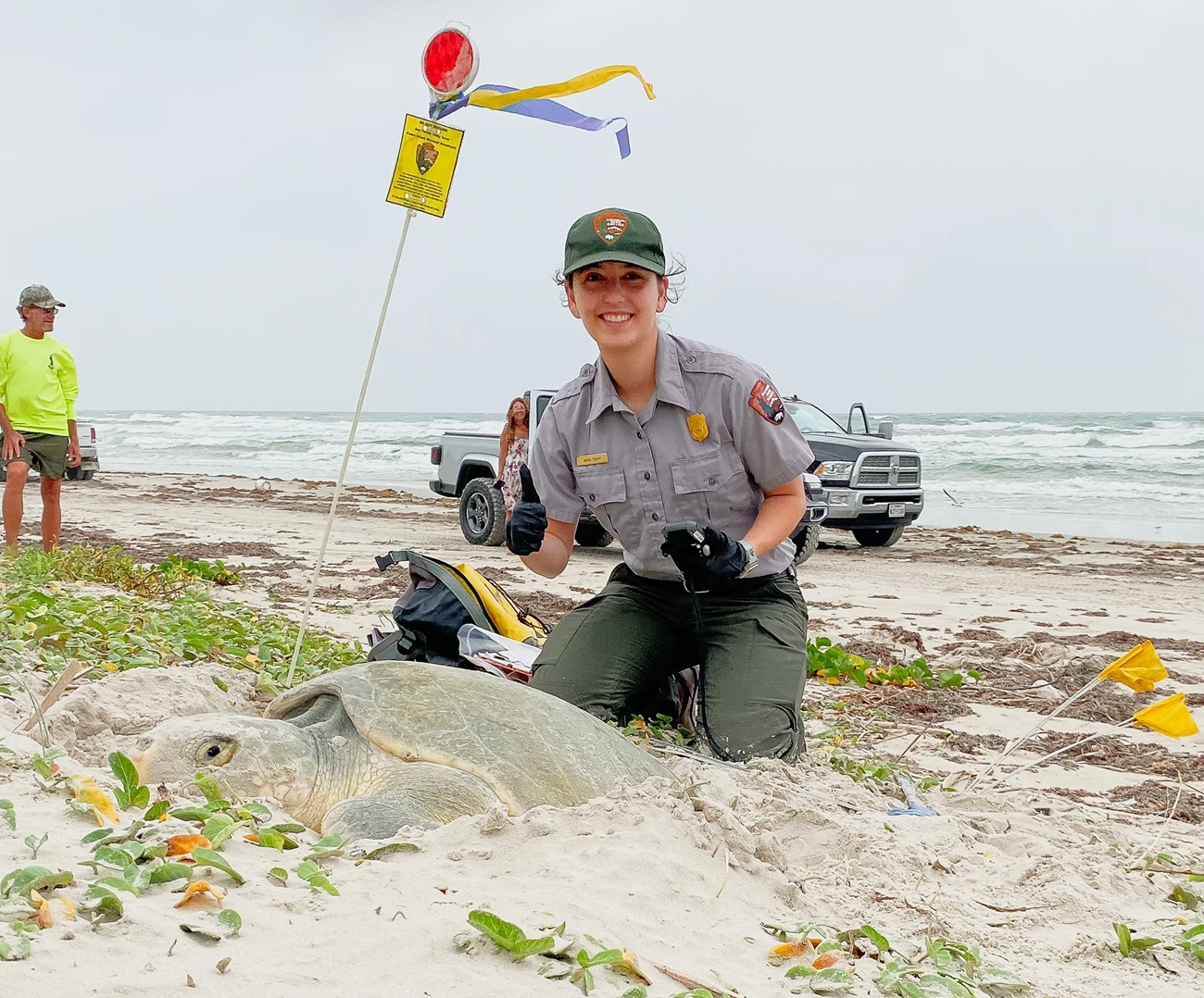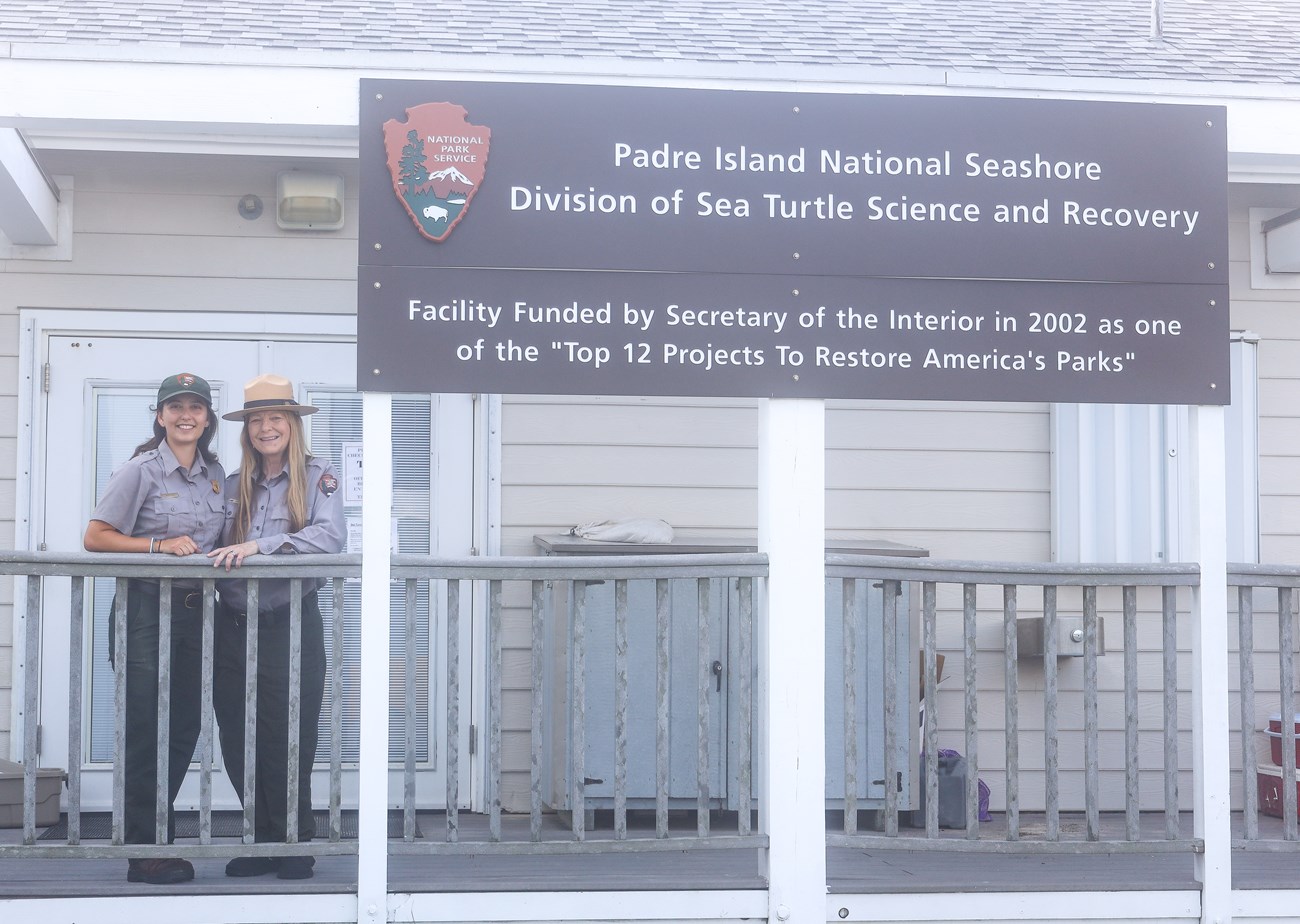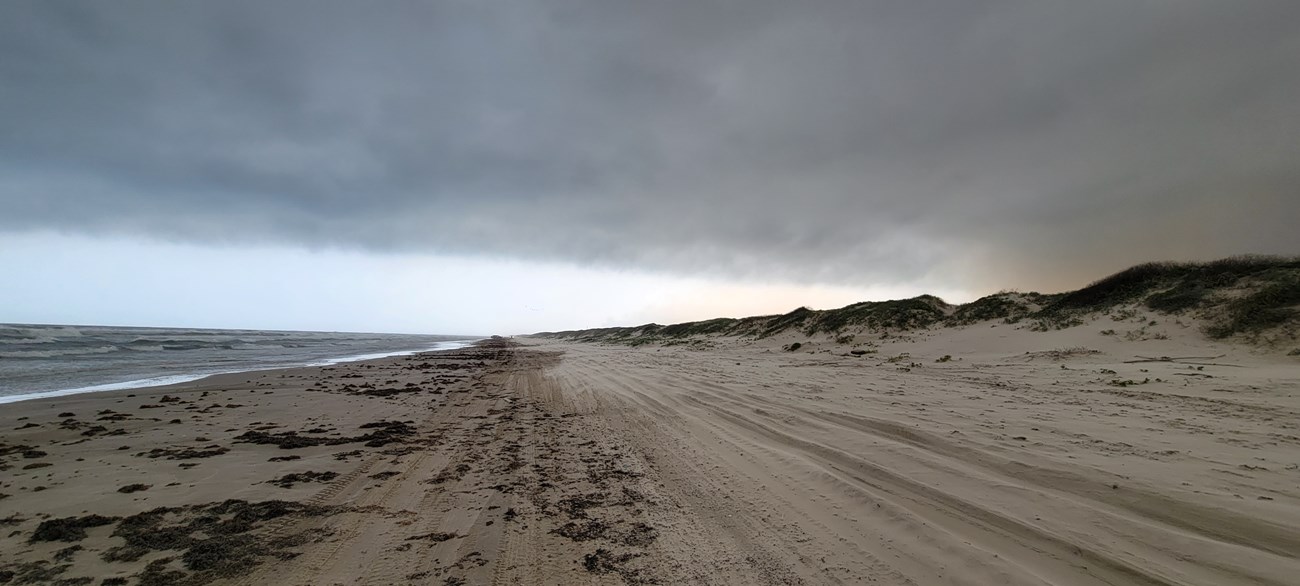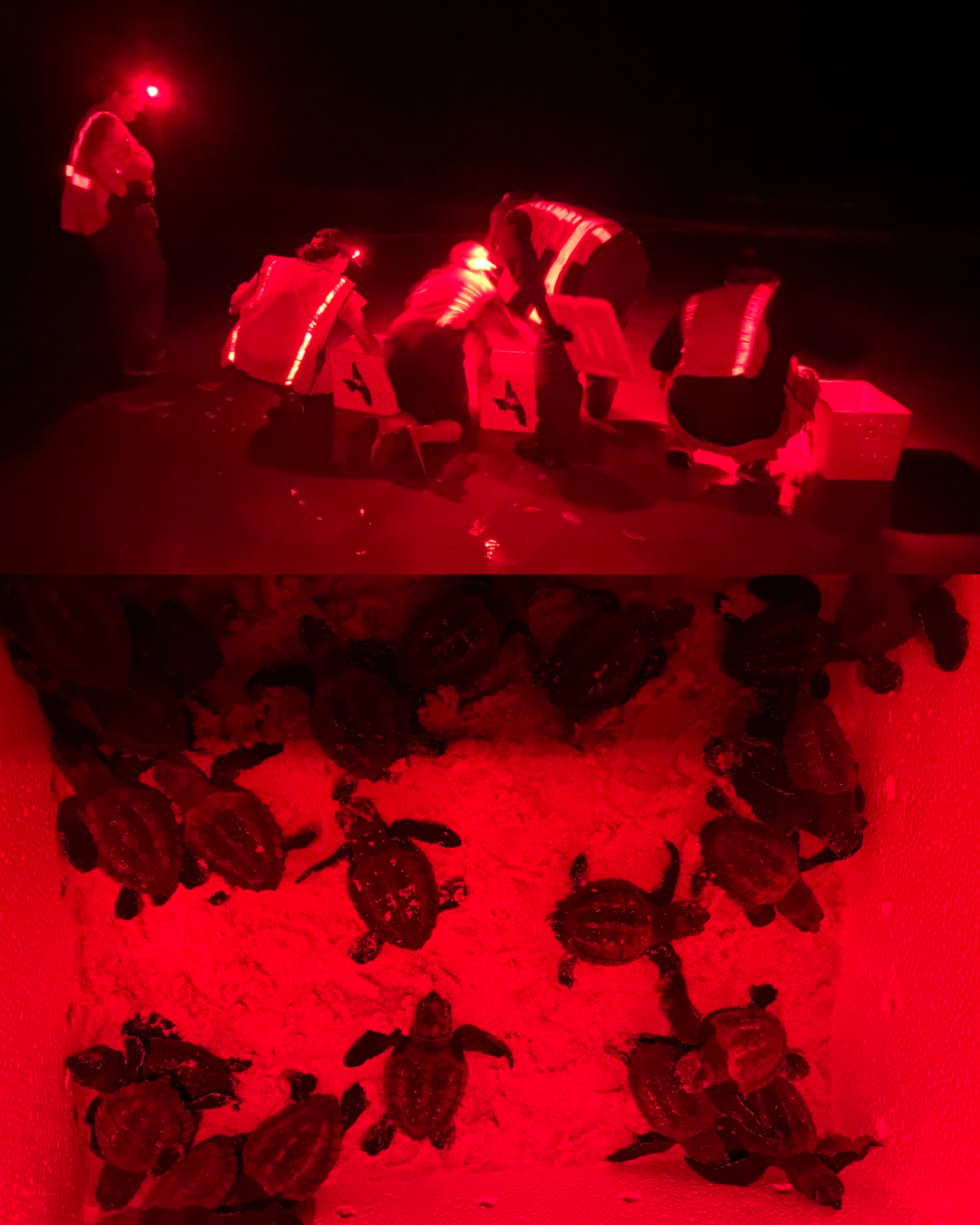Last updated: November 27, 2024
Article
Magic at the Seashore: Working & Mentoring Interns in the Division of Sea Turtle Science & Recovery at Padre Island National Seashore

NPS Photo / Paulina Adame
My Student Conservation Association (SCA) social media internship at Wolf Trap National Park for the Performing Arts was ending, and I had been offered a permanent position as the Visual Information Specialist (read more about my journey). I accepted the position in February with the agreement between my park’s superintendent and I, that I would have the support to continue growing as a field biologist. This meant, leaving the park temporarily to work at another park site. With a background in marine science and fisheries work, I knew I wanted to go back to working with marine wildlife. During my time at Mote Marine Laboratory (2020), I learned about the critically endangered Kemp’s ridley sea turtle (which nearly became extinct in the 1980s) and had hoped to have the rare opportunity to see this day-nesting sea turtle and experience an “arribada” (their group nesting event). Knowing that within the United States the majority of Kemp’s ridley sea turtles nest at Padre Island National Seashore, I knew this is where I wanted to go. Wolf Trap National Park for the Performing Arts' Superintendent Ken Bigley (SCA ‘91 and ’92), Chief of the Division of Sea Turtle Science and Recovery Dr. Donna Shaver (SCA ‘80), and biologist Hilary Frandsen immediately became key in making this a possibility!

NPS / Bethany Ozolins

NPS Photo / Anna Tripp

NPS / Nicole Cotcher

Below: Kemp’ ridley hatchlings in their incubation box ready to be released at the beach.
NPS Photos / Emma Pontius, Anna Tripp
Experiencing Padre Island National Seashore will forever be one of the most memorable opportunities of my career. From colorful sunsets to hazy sunrises, herds of deer grazing in the grasslands, ground squirrels running by the beach, large brown pelicans soaring above the shoreline, and of course nesting Kemp’s ridleys, all make this seashore a Texas gem.
Have a question about Youth or Young Adult Programs? Please e-mail us. Learn more about what we do. Be sure to follow us on Facebook, X (formerly Twitter), and Instagram.
